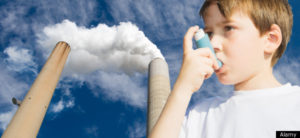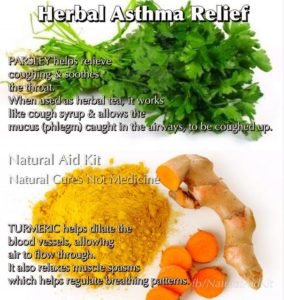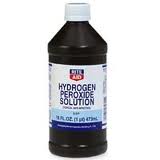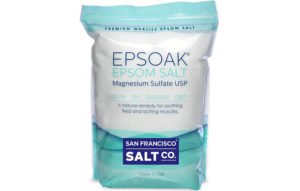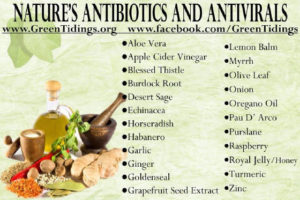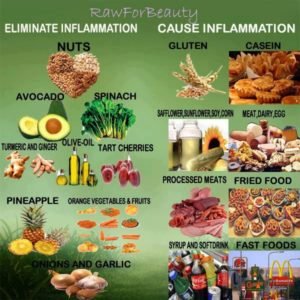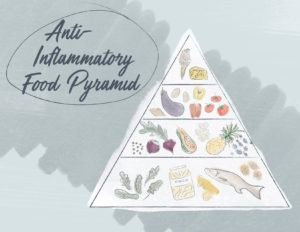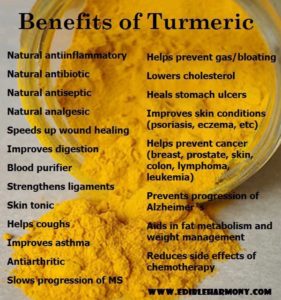Stress
“Stress is wanting something to be the way it isn’t.” – Eckhart Tolle

The medical definition of stress is, “the perception of a real or imagined threat to your body or your ego.” It could be a tiger chasing you or your belief that your spouse is mad at you (even if he or she is not). Whether it is real or imagined, when you perceive something as stressful, it creates the same response in the body.
A cascade of adrenaline, cortisol, and other stress hormones floods your system, raising your heart rate, increasing your blood pressure, making your blood more likely to clot, damaging your brain’s memory center, increasing belly fat storage, and generally wreaking havoc on your body.
The operative word here about stress is that it is a perception, also known as a thought or point of view. There are objective stressors, to be sure — war, death of loved ones, financial troubles, starvation, dental work. But how these affect us determines our body’s stress response. Imagine Woody Allen and James Bond, each with a gun pointed at his head — same external stressor but entirely different responses.
When I was very sick with chronic fatigue, barely able to work, a single father with two kids, thinking I had to go on disability, I worried constantly. I couldn’t sleep, and everything seemed stressful. Then, a wise man told me I had to stop worrying. I argued with him strenuously, providing a comprehensive list of all the real external events that were stressful to me. He just kept repeating that worrying was toxic; he said what really mattered was how I viewed the situation, and he kept telling me I just needed to stop worrying.
And slowly, very slowly, I trained myself to watch my thoughts, my perceptions, and when a stressful thought came into my head, I stopped, took a deep breath, and just let go. It’s like a muscle — it gets stronger the more you use it, but if you let go, it relaxes.
But of course, life takes over and things happen, all the “Ds” — divorce, death, deadlines, demands, dumb thoughts, and dumb schedules. And as anyone does, I get sucked in to negative thinking, which creates stress in my body. My sleep gets interrupted, my muscles get tight, my mood gets cranky, but then I breathe and remember that stress is all in my head. We get so attached to our way of thinking, to our beliefs and attitudes about the way things should be or shouldn’t be, that it makes us sick.
This doesn’t mean that I don’t respond to injustice or experience intense feelings of joy, happiness, sadness, loss, or pain. I do. But I try just to be fully in them when they come, then experience the next moment, then the next and the next, and just show up with my whole self with love and attention. That’s the only thing I can do.
Most people, when they look at my life, think I’m crazy and wonder why I’m not more stressed: running a medical practice; writing books and blogs; teaching all over the world; working on health policy; volunteering in Haiti, churches, and orphanages; being a father, son, brother, partner, friend, boss; and more. But it’s actually quite simple. I don’t worry about things much. I simply wake up and do the next thing as best I can.
And when things get out of control, which they do, I simply make a gentle U-turn. It’s like a GPS for my soul. Your GPS doesn’t yell at you and call you stupid or judge you for taking a wrong turn. In the sweetest voice imaginable, the GPS reminds you to take the next possible U-turn.
Each of us has to find out how to make our own U-turn. There are some wonderful ways I have discovered that work very well for me!
Here’s how I make my U-turns (and I try to pick one or more each day):
Move. The best way to burn off the stress hormones without having to change your thinking is to move and sweat. Run, dance, jump, ride, swim, stretch, or skip — do something vigorous and lively. Yoga is also fabulous, as it combines movement and breathing.
Breathe. Most of us hold our breath often or breathe shallow, anxious breaths. Deep, slow, full breaths have a profound affect on resetting the stress response, because the relaxation nerve (or vagus nerve and not the Las Vegas nerve) goes through your diaphragm and is activated with every deep breath. Take five deep breaths now, and observe how differently you feel after.
Bathe. For the lazy among us (including me), an UltraBath is a secret weapon against stress. Add two cups of Epsom salt (which contains magnesium, the relaxation mineral), a half-cup of baking soda, and 10 drops of lavender oil (which lowers cortisol) to a very hot bath. Then, add one stressed human and soak for 20 minutes. Guaranteed to induce relaxation.
Sleep. Lack of sleep increases stress hormones. Get your eight hours no matter what. Take a nap if you missed your sleep. Prioritize sleep.
Think Differently. Practice the art of noticing stress, noticing how your thinking makes you stressed. Practice taking deep breaths and letting go of worry. Try Byron Katie’s four questions to break the cycle of “stinkin’ thinkin'” that keeps you stressed.
I highly recommend tapping, a technique that combines ancient Chinese acupressure and modern psychology. Pick up a copy of Nick Ortner’s new book The Tapping Solution to learn more. Another great stress-relief technique to try is Holosync, an audio technology designed by the Centerpointe Research Institute, which instantly (and effortlessly) puts you into states of deep meditation — literally, at the push of a button. Visit Centerpointe’s website to find out more. Also, check out meQuilibrium, a digital coaching system created by experts to change the way you respond to stress. It teaches specific skills to help you get a handle on all of the emotional, physical, and lifestyle imbalances that keep you from feeling your best.
Mark Hyman, M.D. is a practicing physician, founder of The UltraWellness Center, a five-time New York Times bestselling author, and an international leader in the field of Functional Medicine.
Look within yourself. What is it that you need?
Self-love and self-care are not selfish. They are necessary. Take some inspiration from those who have explained self-love with eloquence. Go ahead and give yourself a lot of love.
1. “I have learned that self-mastery and the consistent care of one’s mind body and soul are essential to finding one’s highest self and living the life of one’s dreams. How can you care for others if you cannot even care for yourself? How can you do good if you don’t even feel good? I can’t love you if I cannot love myself.” ~ Robin S. Sharma
2. “If you have the ability to love, love yourself first.” ~ Charles Bukowski
3. “Love yourself…you can’t build joy on a feeling of self-loathing.” ~ Ram Dass
4. “You have been criticizing yourself for years, and it hasn’t worked. Try approving of yourself and see what happens.” ~ Louise L. Hay
5. “Document the moments you feel most in love with yourself—what you’re wearing, who you’re around, what you’re doing. Recreate and repeat.” ~ Warsan Shire
6. “Self love is the elixir of an immortal heart.” ~ Amy Leigh Mercree
7. “You yourself, as much as anybody in the entire universe, deserve your love and affection.” ~ Buddha
8. “I am my own experiment. I am my own work of art.” ~ Madonna
9. “To love oneself is the beginning of a life-long romance.” ~ Oscar Wilde
10. “Self love is an ocean and your heart is a vessel. Make it full, and any excess will spill over into the lives of the people you hold dear. But you must come first.” ~ Beau Taplin
11. “The best day of your life is the one on which you decide your life is your own. No apologies or excuses. No one to lean on, rely on or blame. The gift is yours—it is an amazing journey—and you alone are responsible for the quality of it. This is the day your life really begins.” ~ Bob Moawad
12. “A healthy self-love means we have no compulsion to justify to ourselves or others why we take vacations, why we sleep late, why we buy new shoes, why we spoil ourselves from time to time. We feel comfortable doing things which add quality and beauty to life.” ~ Andrew Matthews
13. “Self-love is the source of all our other loves.” ~ Pierre Corneille
14. “Celebrate who you are in your deepest heart. Love yourself and the world will love you.” ~ Amy Leigh Mercree
15. “If you aren’t good at loving yourself, you will have a difficult time loving anyone, since you’ll resent the time and energy you give another person that you aren’t even giving to yourself.” ~ Barbara De Angelis
16. “It’s all about falling in love with yourself and sharing that love with someone who appreciates you, rather than looking for love to compensate for a self love deficit.” ~ Eartha Kitt
17. “When I loved myself enough, I began leaving whatever wasn’t healthy. This meant people, jobs, my own beliefs and habits—anything that kept me small. My judgement called it disloyal. Now I see it as self-loving.” ~ Kim McMillen
18. “People are like stained-glass windows. They sparkle and shine when the sun is out, but when the darkness sets in their true beauty is revealed only if there is light from within.” ~ Elisabeth Kübler-Ross
19. “Self-care is never a selfish act—it is simply good stewardship of the only gift I have, the gift I was put on earth to offer to others.” ~ Parker Palmer
20. “Stand up for who you are. Respect your Self and ignite the divine sparks in you. Access your powers. Choose your rights and work together with others to bring blessings into the lives.” ~ Amit Ray
Here are a few ideas:
Take a long, luxurious bath.
Cancel something from your crazy schedule to simply read a book and drink some tea or coffee.
Meet up with a friend who you’ve been too busy to see.
Go to a yoga or meditation class.
Get a massage.
Clear time from your work schedule to spend quality time with your partner or kids.
Cook something new, something healthy and nourishing—something that you want to eat, and isn’t necessarily a meal that pleases everyone else in your household. (If cooking is something that calms you.)
Simply lay down, put your legs up the wall and breathe.
Listen to some nice music, or some beautiful mantras.
Make a vision board all about your wishes and dreams.
Sit in meditation, put your hands over your belly or your heart and emanate a deep gratitude for all that you are.
Draw, make a sculpture, take some photos—anything creative.
Spend some time in nature; take a walk in that beautiful place that’s really close to your house but you don’t have a chance to get to much.
Light a candle or some incense.
Put on your favourite comfy pants and take some time to truly lounge (especially if your life is busy busy busy).
Learn something new. (Consider what it is that you love learning about and see if there’s an online course, or even a documentary that you can watch.)
Breathe in, breathe out.
Simply be.






